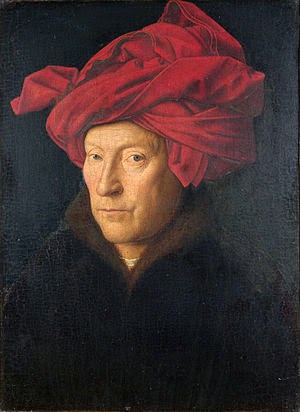The idea of a selfie isn't exactly new, it's just mainstreamed so much recently that we feel like it is new. Technology today is literally programmed to take selfies, I mean what else would a front facing camera on your phone do besides take pictures of yourself? But before we had cameras selfies were still relevant. A self portrait is the artistic term for selfie, so let's think back to some of the more aesthetically pleasing selfies...
Even though self portraits date back to some of the earliest pieces of art, they became more prominent during the Early Renaissance. This was during the mid-15th century, when mirrors became cheap enough for most people to buy. One of the earliest self portraits is thought to be by Jan Van Eyck's Portrait of a Man in a Turban painted in 1433. Even though it cannot be proven that it is a self portrait.
 |
| Jan Van Eyck, Portrait of a Man in a Turban, 1433, oil on panel, National Gallery, London |
The first prolific self-portraitist, or selfie obsessed artist was Albrecht Durer. His most well known self portrait being his Christ-like selfie when he was 28.
 |
| Albrecht Durer, Self Portrait in a Fur-Collared Robe, 1500, oil on linden wood, Alte Pinakothek |
 | |
| Vincent van Gogh, Self-Portrait, 1890, oil on canvas, Musee D'Orsay, Paris |
I've always had a personal interest in self portraits and find it very intriguing how artists portray themselves. I suggest looking up artists and seeing if they have self-portraits, most Contemporary artists don't seem to do selfies (which is ironic) but many 18th Century and the centuries preceding have many artists that do.
I'm curious as to what other people think and why Contemporary artists don't create as many selfies as before, let me know by leaving a comment or tweeting at me!!



